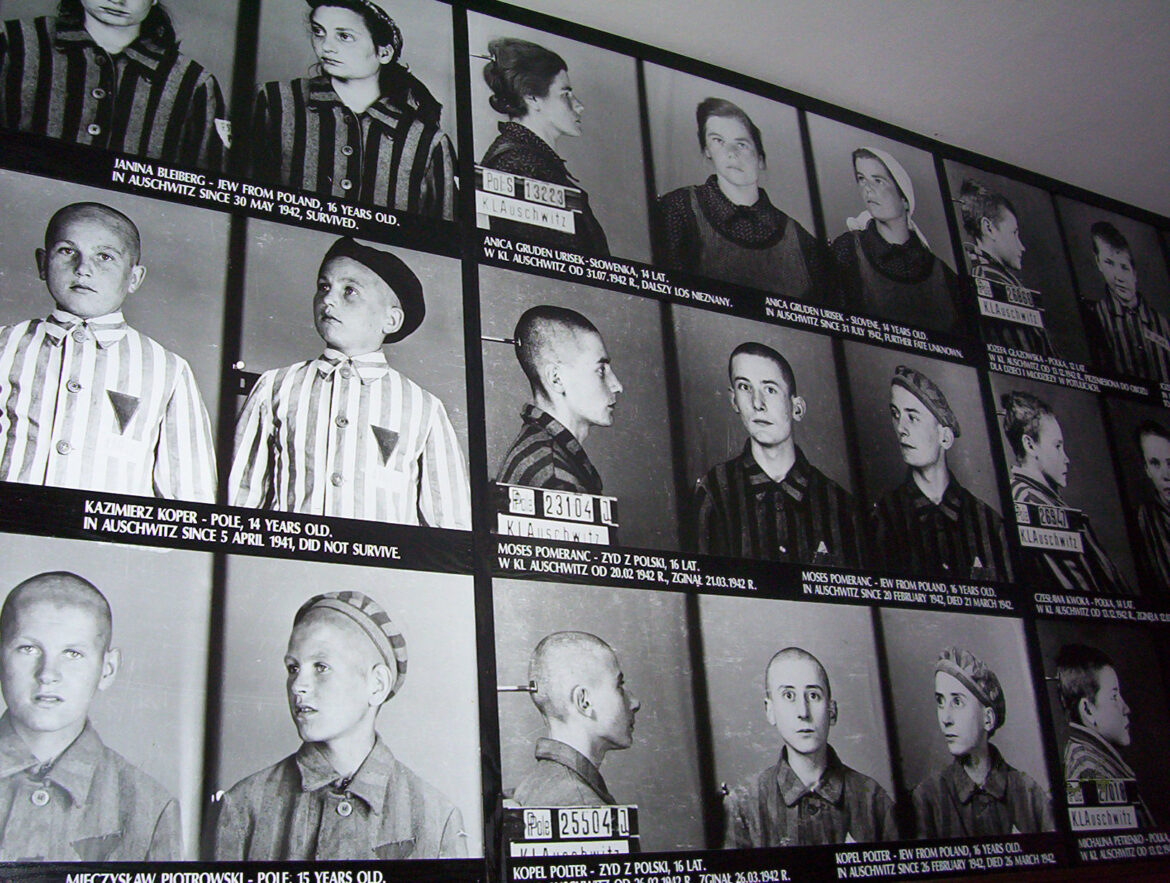When he became a photographer in pre-war Poland, Wilhelm Brasse did not expect what the future held for him. He twice refused to sign the German nationality list (Volksliste) and was sent to Auschwitz. There, he was ordered by the SS officers to take photos for secret documentation. He also captured the lives of prisoners, but after the trauma of war he never returned to his profession as a photographer.
Wilhelm Brasse was born on 3 December 1917 in Żywiec (a town in southern Poland). His grandfather on his father’s side, Albert, came from Alsace. Wilhelm therefore had German ancestry, but his mother was Polish. The couple raised their son in patriotism and love for Poland. Wilhelm’s father fought against Bolshevik Russia, which in 1920 tried to conquer the Second Polish Republic and the rest of Europe.
Before the Second World War, Wilhelm became a photographer. He learnt this profession in an atelier in Katowice, which belonged to his aunt.
Photographer and Pole
On 1 September 1939, the German army attacked Poland and the Second World War began. Because Wilhelm had German roots, the Nazis, after occupying Żywiec, offered him to sign the Volksliste. This was a special list of people, divided into four categories, including people of German origin to strengthen “Germanness” in occupied Polish territory.
After refusing to become a Volksdeuche, Brasse went to Krynica, to continue working as a photographer. However, he longed to fight the Germans and decided to make his way to France, where the Polish army was being formed.
However, while crossing the border in 1940, he was spotted by Lemkos, who denounced him. The Germans arrested Wilhelm Brasse and put him in prison. That same year they transported him to the German concentration camp Auschwitz. During the transport, the German occupiers once again offered him to sign the Volksliste, but Brasse felt completely Polish and did not want to collaborate with the Germans. He thought that despite the repression he was facing, it would be dishonourable to deny Poland. Once again, therefore, he refused and was soon welcomed by the new, cruel reality of Auschwitz.
Pictures from hell
In the camp he was given the number 3444 and was sent to do construction work. Soon, however, the Germans found out about his photographic skills. They ordered him to take mugshot photographs of incoming prisoners. He took up to a thousand of them for a night. After the war, he estimated that he had taken around 50,000 of photos during his captivity in the camp.
He also photographed daily life in the camp: the work of the prisoners and even the social gatherings of the German camp functionaries. He took postcard and portrait photographs. When the Germans liked them, they gave him bread, sometimes cheese and even sausages. As he himself recalled, this allowed him to share his food with others. At Auschwitz, he was also commissioned to photograph the wedding session of a prison couple.
In 1943, the camp’s SS doctors, Josef Mengele, known as the “Angel of Death”, and Eduard Wirths, who conducted pseudo-scientific medical experiments on the camp’s prisoners and after the war were considered German criminals, also decided to make use of his photographic expertise. It was those photographs that left the greatest trauma in Wilhelm’s memory. Mengele had him take photographs of, among others, naked Jewish women and Roma with water cancer who being subjected to cruel experiments. When the ‘Angel of Death’ was moved out of the camp, the German camp authorities forbade Wilhelm to take pictures of the Jews. They considered it a waste of the photo material.
He did not destroy the photographs
In 1945, Germany was losing the war. On the Western Front, the German army was retreating from the advancing Allies, and the Red Army was coming from the East. Soviet troops were getting closer to Auschwitz and the Germans ordered the photographer to destroy the photographs he had taken. Brasse began to burn the negatives. These, however, were made of non-flammable celluloid. Thanks to this, Wilhelm and his colleague were able to save the photographs. They both did this in conspiracy from the camp officers, of course. The photographs were later used not only by historians but also by lawyers during trials against the German Nazis.
Brasse was evacuated to another German concentration camp, Mauthausen-Gusen. There he was liberated by US troops. The Americans advised him against returning to Poland because of the communist takeover. They offered to accept citizenship of some Western country, but Wilhelm refused.
Trauma for the rest of his life
After returning to his hometown, Brasse still intended to work as a photographer. Unfortunately, the images of frightened Jewish women in the camp kept coming before his eyes. After the war he confessed: “I was photographing women, girls, and at the same time I had visual associations. I saw those naked Jewish women. I started to feel disgusted by taking pictures. It affected my psyche so much that I couldn’t forget it. I’m going to die with this.”
Wilhelm went to a psychiatrist for help and was advised to break with his profession. He became an artisan and did not tell anyone about his past for years. However, Israeli historians reached him, followed by Ireneusz Dobrowolski, a Polish director. He made a documentary film about Wilhelm titled “Portraitist”.
23 October 2012. Wilhelm Brasse died in his hometown.
In 2020, it was reported that a feature film production would be made about the photographer’s life. Hollywood director Robert Stromberg, winner of two Oscars, will direct the film.





